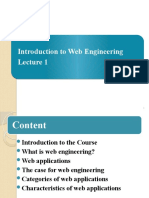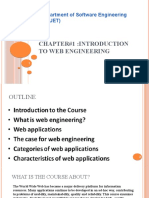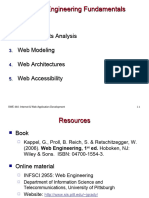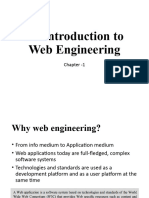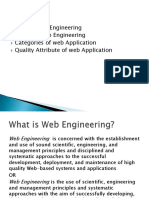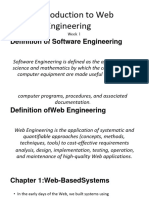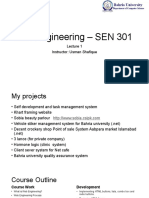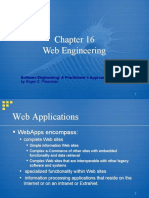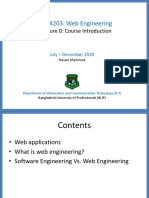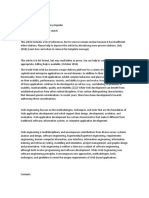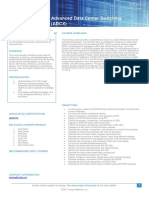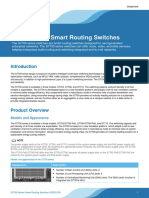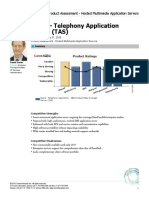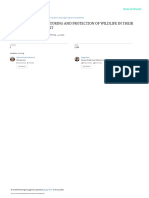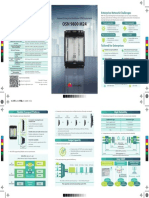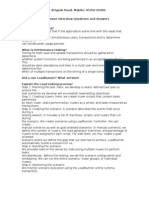0% found this document useful (0 votes)
60 views31 pagesChapter 1 - Course Outline
The document outlines the objectives and learning outcomes of a web engineering course, emphasizing the systematic approach to developing web applications and services. It defines web applications and services, discusses the importance of web engineering in addressing common project pitfalls, and categorizes various types of web applications. The document also highlights the characteristics and complexities of web applications compared to traditional software engineering methods.
Uploaded by
ayabahaaCopyright
© © All Rights Reserved
We take content rights seriously. If you suspect this is your content, claim it here.
Available Formats
Download as PDF, TXT or read online on Scribd
0% found this document useful (0 votes)
60 views31 pagesChapter 1 - Course Outline
The document outlines the objectives and learning outcomes of a web engineering course, emphasizing the systematic approach to developing web applications and services. It defines web applications and services, discusses the importance of web engineering in addressing common project pitfalls, and categorizes various types of web applications. The document also highlights the characteristics and complexities of web applications compared to traditional software engineering methods.
Uploaded by
ayabahaaCopyright
© © All Rights Reserved
We take content rights seriously. If you suspect this is your content, claim it here.
Available Formats
Download as PDF, TXT or read online on Scribd
/ 31







